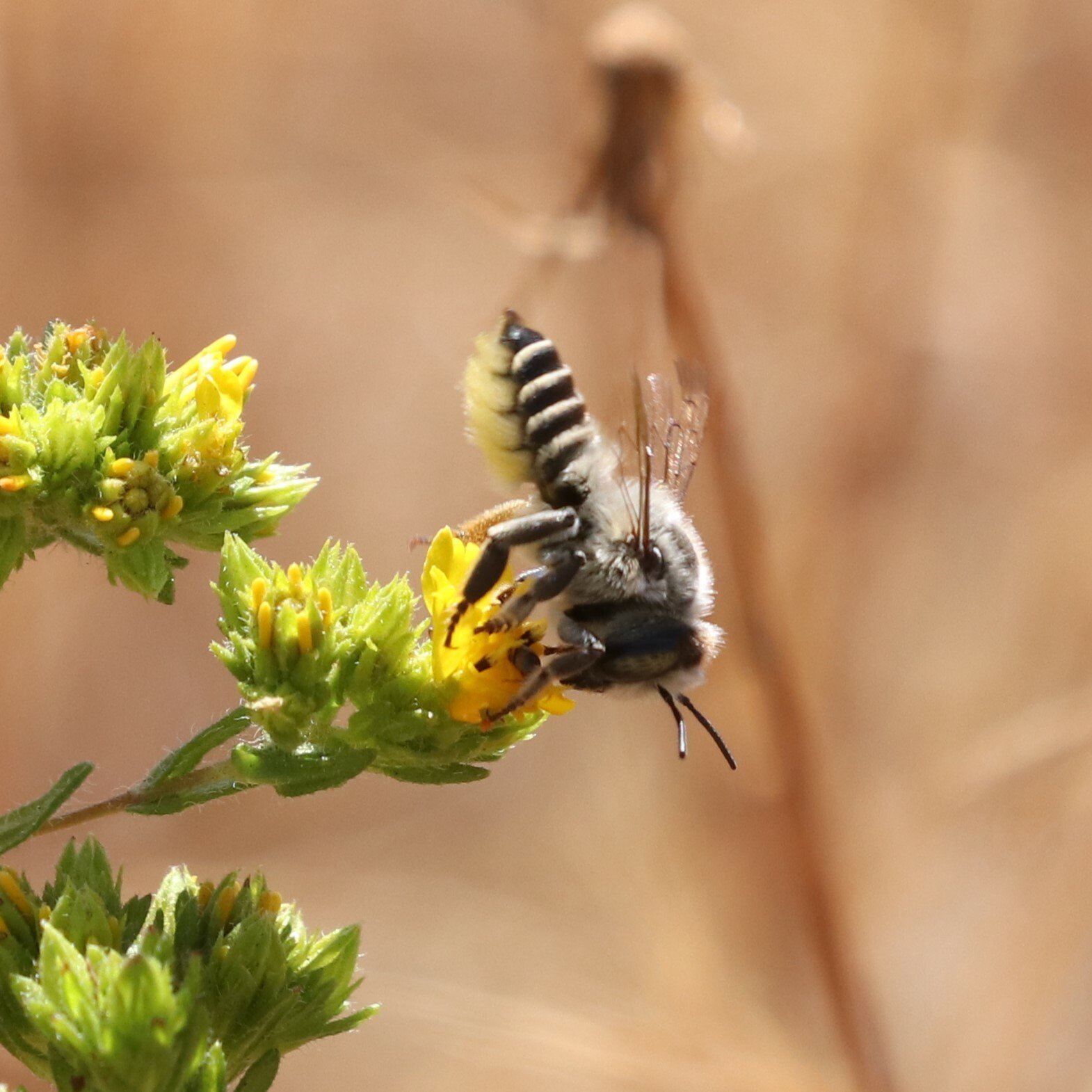The Small World of MTRP: Terrestrial Invertebrates Observed in the Park
By Patricia Simpson, Trail Guide Class of 2013
(reprint from the Mission Trails newsletter)
In a world where the European Honeybee (Apis mellifera) gets all the publicity and glory for pollination, I’d like to introduce to you the leafcutter bee (genus Megachile). Leafcutter bees are fairly common. Their size, depending on the species, ranges from about the same to slightly smaller than a honeybee. And that’s about all these two have in common.
Unlike the honeybees, Megachile (pronounced mega-kyle-y) bees are solitary. That means that every female can and will lay eggs. A leafcutter bee emerges from March through September here in San Diego, thanks to our mild weather and flower abundance. The adult bee has a relatively short life span of just a few weeks when mating, feeding, and reproducing for the following season are priorities.
Leafcutter Bee (Megachile)
Photo by carrotpeople https://www.inaturalist.org/observations/227441674
Depending on the species, the female will cut circular pieces out of broad leaves or flower petals to line a cavity. At the end of the cavity, she will lay an egg and deposit a ration of pollen and nectar for the larva to feed on after hatching. She then builds a wall out of food, mud, or leaf (or a combination) and lays another egg into the next section or cell. She repeats the process until she gets to the end of the cavity or tube and seals it. Her work in producing the next generation is done! While many females can nest in very close proximity, they do not share burrows or nesting “tubes.” They only collect enough pollen and nectar to eat and to place in nesting cells, where they have laid their own eggs. The larvae will hatch, feed, and pupate through the cold months to emerge as adults in the springtime or later. There’s no honey production involved at all. In fact, contrary to popular belief, the production of honey by bees is very rare. Only a few species (about 8 out of 20,000 worldwide) produce honey!
Why would you want leafcutter bees in your backyard? They are native, very productive pollinators, and rather tame. Unlike honeybees which gather pollen loads on their hind legs (secured there with honey and nectar), Megachile bees gather pollen on their underbelly. The pollen loosely attaches to special hairs called pollen brushes. This means that when visiting other flowers, leafcutter bees will disperse pollen at a greater rate than honeybees and hence pollinate more efficiently! Honeybees, despite being an essential domestic pollinator for large monocultures, are non-native to the Americas and highly invasive, especially in non-agricultural settings. According to a study by Cane and Tepedino, a single honeybee colony may remove as much pollen as would otherwise support 33,000 native pollinators every month (https://conbio.onlinelibrary.wiley.com/doi/full/10.1111/conl.12263).
In San Diego, you may still be able to see the last of the Megachile bees in November. After this, it is the perfect time for you to investigate how to attract them to your yard the following season. Fortunately, the internet is filled with useful information about how to keep leafcutter bees. You may decide to build your own “housing” (fun project with the kids!) or purchase a pre-made “facility” from the many companies who offer them (present for a loved one?). If you decide to purchase leafcutter bees, as opposed to simply letting them come to your yard naturally from neighboring areas, make sure the species you are purchasing does occur in San Diego County.

